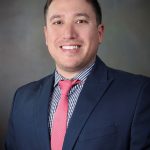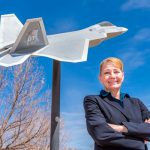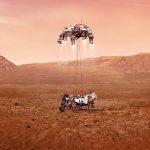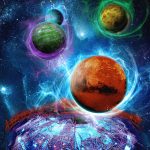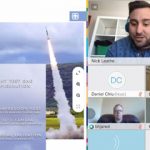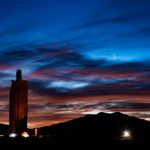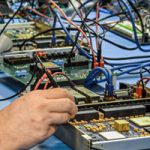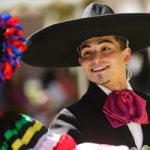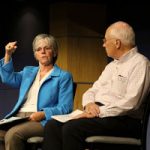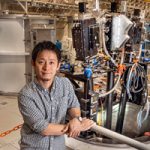Largest aerospace society honors Sandia researcher as ‘Engineer of Year’
‘Jack-of-all-trades’ improves future spacefaring calculations
Sandia deputy director to head national aeronautics institute
Laura McGill to replace Labs’ deputy chief research officer as AIAA’s president
Sandia contributes to the Mars 2020 mission
Sandia contributes to the Mars 2020 mission
Z machine probes super-Earth atmospheres
A step in the search for other life in the galaxy
Engineers teach Stanford 3D printing students, virtually
Sandia engineers Bradley Jared and Nick Leathe exposed more than a dozen freshman students from a 3D printing class at Stanford University to some of Sandia’s additive-manufacturing capabilities in a May 20 online class.
NEOWISE Comet comes by for a visit
Labs Photojournalist Randy Montoya made a very early morning trek out to Sandia’s Solar Tower to capture this image of the NEOWISE Comet.
Armoring satellites to survive, operate through attacks
Researchers at Sandia launched a seven-year mission campaign this month to develop the science, technology and architecture needed for autonomous satellite protection systems. The campaign, called STARCS, will fund dozens of Laboratory Directed Research and Development projects.
Sandia celebrates Hispanic Heritage Month
In an annual tradition, Sandia commemorated National Hispanic Heritage Month with lively events to celebrate the cultures, histories and contributions of the Hispanic population.
Younger: A Sputnik moment is coming
Laboratories Director Steve Younger and Chief Research Officer Susan Seestrom took the stage at the Steve Schiff Auditorium Aug. 26 to discuss “discovery science” and what it means for Sandia. The talk was the latest installment of the New Research Ideas Forum.
Experiments at sun temperature offer solar model solutions
Physicists at Sandia’s Z machine have found that a widely used astronomical model underestimates the energy blockage caused by free-floating iron atoms. Now, Sandia’s experimental opacity measurements can help bloodlessly resolve a major discrepancy in how the 40-year-old Standard Solar Model uses the composition of the sun to predict the behavior of stars.
